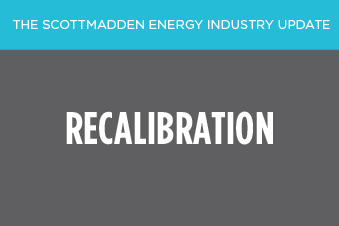
Operational technology (OT) is a mission-critical function that must increasingly respond to industry changes. The traditional OT model distributed OT responsibilities across operating areas, embedding these responsibilities within engineering functions. While this model provided OT responsiveness to operating areas, several complications have been revealed that reduce its effectiveness in today’s changing environment:
- Inefficient use of resources in a time of increasing operations and maintenance (O&M) budget constraints due to multiple groups performing similar activities on different equipment
- Limited ability to respond to increasing security and compliance concerns because managing the necessary controls across multiple organizations is difficult
- Challenges implementing new digital technologies to provide new operational capabilities by the various islands of OT with limited technical expertise supporting them
- Risk of losing crucial knowledge with many small group team members who support distributed OT systems but who are nearing retirement age and leaving the workforce
While centralizing OT operations can address many of these challenges, centralization alone is not the answer. Operating areas still require the responsive support they get from their dedicated OT teams. Organizations have addressed these challenges and successfully consolidated their OT organizations by implementing an OT service delivery model. These transformations have allowed organizations to meet emerging industry needs, acquire scarce technical resources, and work within budget constraints while maintaining and improving operating area responsiveness.

Key Components of the OT Service Delivery Model
OT Value Chain – The OT value chain defines how OT services are delivered to the operating areas, providing the responsiveness they require. These services are documented in a service catalog with appropriate service-level and operational metrics, which are regularly reviewed and updated with operating area leadership. The OT value chain enables OT to streamline services and eliminate redundancies. OT value chain services include:
Build Services
|
Run Services
|
Planning Functions – Planning functions ensure that alignment is maintained across the entire service delivery model. They provide focus to the OT team and establish clear accountability for the long-term sustainability of operational technologies. They are responsible for standardizing processes and procedures to codify the tribal knowledge of the workforce and facilitate a knowledge transfer to sustain end-of-life technologies. These functions also include the technical expertise necessary for digital efforts and the adoption of these digital enhancements. Planning functions provide the following benefits:
- Ensure that information security strategies are aligned with and support operations objectives by using a governance and standards framework
- Ensure that critical assets are reliable and available
- Ensure that vendors meet OT requirements to provide consistent operational capabilities
- Align all projects with OT strategy and ensure they follow the standard project management approach to promote work efficiency
- Establish a common architecture consisting of operations process, data, application, and technology architecture layers to create alignment across OT functions
- Provide a structured approach to handling OT staffing and finance needs to ensure OT can work within O&M budget constraints and meet hiring needs
Cybersecurity and Compliance Functions – Security and compliance functions are built into the standard operating procedures for delivering build and run services across the application and infrastructure portfolios. Embedding security and compliance functions into these operating procedures simplifies and standardizes the controls across the critical infrastructure rather than distributing the functions across multiple organizations. This model provides line of sight into adherence to security and compliance controls across the OT enterprise. Security and compliance functions provide the following benefits:
- Protect OT data per an acceptable level of security risk according to the security policy
- Ensure that all users have information access rights following operating requirements to maximize user productivity
- Ensure that OT compliance integrates with overall enterprise compliance to increase compatibility and efficiency in meeting compliance requirements
- Enable OT organizations to respond to incidents and quickly adapt to disruptions to minimize disturbances for operating areas
- Define and maintain descriptions and relationships among key resources and capabilities to deliver OT-enabled services effectively
- Monitor all events that occur through the OT infrastructure to identify security risks and service disruptions
Service Management Functions – Service management functions facilitate a strong partnership with operating areas to build confidence and provide an appropriate standard of service. These functions rely on a service-oriented approach to set and monitor operating area performance expectations. This approach provides performance transparency to the areas served, and it enables a constant feedback loop between the OT organization and these areas to ensure their needs are being met. Service management functions provide the following benefits:
- Provide timely and effective response resolution for all types of faults and events to maximize responsiveness to operating area needs
- Prevent recurring incidents by identifying and classifying problems and their root causes
- Meet operational and compliance demands by managing all changes in a controlled manner
- Ensure that all efforts from the demand portfolio are managed in alignment with operating strategies and meet operating area responsiveness needs
A comprehensive OT service delivery model addresses the issues with traditional OT organizations, while providing the responsiveness required by operating areas. An OT service delivery transformation enables utilities to respond to the changing industry landscape and acquire necessary technical capabilities, even as budgets are constrained. To learn more about OT service delivery models and how we can assist your organization, contact us. Additional Contributing Authors: Todd Ponto and Laura Dorn


























